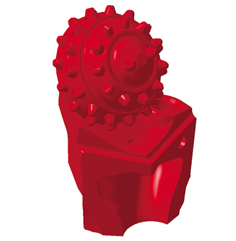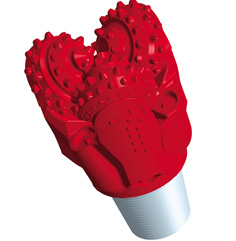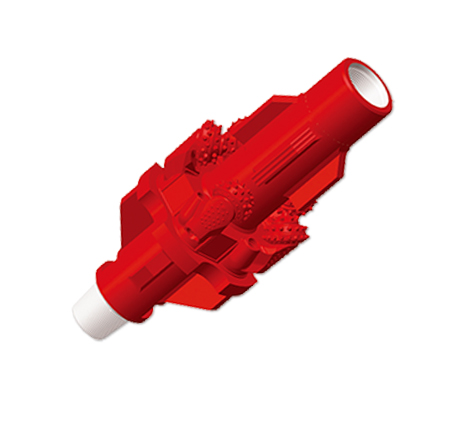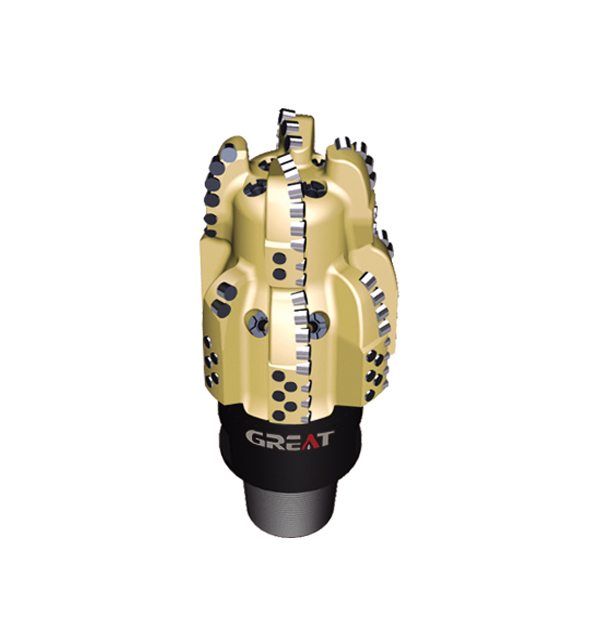PDC drill bit relies on the cutting teeth installed on the drill body to cut the formation. There are two types of cutting teeth: compounded teeth and column teeth. Compound teeth are directly welded onto the reserved grooves on the drill body. They are generally used for body drill bits. Column teeth are welded onto the tungsten carbide column and then embedded or welded into the teeth of the drill body. They are generally used for steel body drill bits, but can also be used for body drill bits.
It has long been discovered through experiments that the tensile strength of rocks is the lowest, followed by shear strength, while compressive strength is the highest, often several times to tens of times higher than shear strength. Obviously, breaking rocks with shear force is easier and more effective than with crushing force.
The cutting structure of PDC drill bit uses this mechanical property of rocks to break rocks efficiently and quickly using a shear force. When the PDC drill bit enters soft to medium hardness formations, the compound teeth overcome the formation stress under the action of drilling pressure and torque, engage with the formation, and move forward. The rocks are crushed and produce plastic flow along the shear direction, resulting in large pieces of rock cutting, which is similar to cutting metal materials with tools. The sheared rock cuttings are then carried away by the mud jet to the annulus between the drill bit and the borehole and transported out of the wellbore.
Polycrystalline diamond compacts can be divided into column-type and plate-type, commonly shaped as circles, points, and semicircles. They are usually embedded in the body in a columnar manner.
The arrangement of cutting teeth affects PDC drill bits
The arrangement of cutting teeth is related to the formation being drilled and the type of drill bit, which affects the mechanical drilling speed, footage, and wear of the drill bit. The more cutting teeth are arranged, the slower the wear and the longer the lifespan of the drill bit, but the lower the mechanical drilling speed. The arrangement of cutting teeth should ensure that the cutting forces, the amount of rock being cut, the load, the torque, the wear, and the hydraulic flushing are all the same for each cutting tooth. Therefore, there are requirements for equal cutting, equal power, and equal wear design.
The exposure of cutting teeth affects PDC drill bits
It refers to the distance between the cutting edge and the drill bit body. The cutting teeth can be fully exposed or partially exposed. Fully exposed cutting teeth are generally used for drilling soft formations, which is beneficial for cleaning the drill bit and has a higher drilling speed. Partially exposed cutting teeth are used for harder formations. They have higher cutting tooth strength but are relatively difficult to clean, making them suitable for drilling with oil-based drilling fluids. Hard alloy body drill bits are not limited by machining because they are formed by casting.
The arrangement direction of cutting teeth affects PDC drill bits
There are currently many studies on the arrangement of cutting teeth for PDC drill bits. In order to facilitate the removal for drilling, the arrangement of cutting teeth on the drill bit body should also consider the side angle and back angle. The side angle generates lateral force during drilling, and under the action of drilling fluid cleaning, it helps to remove the cuttings from the center of the drill bit and effectively clean the drill bit.
The back angle, besides facilitating the cleaning of the cutting teeth of the PDC drill bit, can reduce the vibration of the cutting teeth and protect the cutting edge, extending its lifespan when the cutting force increases in hard rock formations. The back angle is generally 0 to 25°. The larger the back angle, the lower the mechanical drilling speed, but in hard formations, the back angle can reduce damage to the cutting edge.
 English
English français
français Deutsch
Deutsch Español
Español italiano
italiano русский
русский português
português العربية
العربية tiếng việt
tiếng việt ไทย
ไทย Nederland
Nederland




